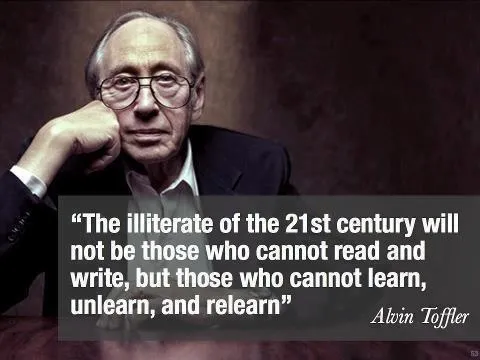
The Five Estates of Technology
“Work is no longer a place to go and come back from... It’s a state, a state that is no longer hinged on locations or premises.”
My son is in sixth grade, but he is already far more conversant with computers than I was his at his age. When he was five years old, I got him an iPad, he mastered its use in a couple of days. There is no denying that technology is evolving quickly, continuously, and becoming more integrated into our lives. It makes me wonder how the world will be when today’s 12-year-olds are in their late twenties.
Porter said that organizations, in order to maintain their competitiveness, should focus on their core competencies. Implicit in this are: (a) value stems from structural advantage; (b) uncertainties are low; (c) strategies can be made according to competitors’ behavior; and (d) automation can lead to structural advantages. As a result, workflows and processes were either based on management laws like these or on lessons from the industrial revolution. However, rapid technology and business changes are eroding these concepts. Their failure is often attributed to their incorrect focus on beating competition instead of generating more business.
Success stories such as Google, Facebook, Apple, and Amazon demonstrate that a high-speed response to rapid changes, unique offerings rather than standardized services, and obsessive focus on customers are the new normal. This means centering strategies on the human being as a consumer or as a resource.
In sociology, stratification of a community is an optimized approach to maintaining balance between power and resources. We can use these estates of stratification as an analogy to describe the usage, evolution, proliferation, and effects of technology.
First Estate (the clergy): characterized by the limited use of technology and its shut-out from the public. This is partially because technology is expensive and requires specialized skills, and partially because its use is limited to serving specific objectives that do not have immediate touchpoints in everyday life and business. Hence, usage remains in the hands of a few and for limited functions.
Second Estate (the nobility and royalty): The beginning of the devolution of technology is the hallmark of this estate. Although technology has become more accessible, it is not necessarily easy to use. Hence, its operation and management continue to be limited to a few who understand its intricacies due to their expertise, experience, or closeness to decision-making. Large-scale usage in the industry is still absent.
Third Estate (the generality of people): Technology begins reaching the “shop floor.” Businesses start comprehending how they can utilize technology to enhance productivity. For progress and efficient processes, more technology is deployed. However, at the same time, rationalization and consolidation are used as means to build more control, structure, and efficiency.
Fourth Estate (the societal force): Technology becomes more commonplace and easier to use. Skills required to use technology have become widespread, and technology integrates heavily into workflows. We use the decentralization approach to enable agility and flexibility. However, technology remains bound within four walls, and the processes that it supports remain buried within the premises.
Fifth Estate (the perfect storm): Technology costs decrease and its capabilities improve dramatically. The convergence of networks, powerful devices, game-changing services, and blurring of boundaries between work and pleasure fosters “ubiquitous computing.” Workplaces no longer confine technology. This is the fifth estate.
The fifth estate creates a living fabric comprising services, processes, technology, and humans. It provides the possibility of innovating faster beyond organizational boundaries compared to internal setups. By questioning traditional approaches, it creates new business models. It pervades everyday life and work and evolves as it encounters new scenarios and challenges. It manifests itself through social media, mobility, analytics, and cloud-dominant forces that will shape future organizations and societies.
If economic and geopolitical events have taught us anything, it is that “rapid change” is here to stay. Organizations will have to jump into new scenarios without necessarily knowing the full details or the final outcomes. In order to succeed, they will need to develop the ability to fail fast, learn, innovate, and regroup.
This is the initial stage of the age of “knowledge work.” And already, there is a growing demand to break out of silos (functional, technological, process-based, location-based, etc.). Knowledge workers now hold the belief that "work" is no longer merely a destination to which they must return. Instead, it’s a state, a state that is no longer hinged on locations or premises. This fundamental change in thinking brought about by the Fifth Estate is turning the concepts of the Industrial Revolution on their heads.
As pressure increases, traditional workflows will be abandoned; job families will be superseded, and organizational models will change drastically. Business ecosystems are likely to become even more symbiotic. In effect, the nature of work will undergo a radical change. The following are my predictions for the future of work:
- Ecosystem Kanban: Task assignment was a direct consequence of the industrial revolution, where a more linear workflow was required. The future workforce will no longer receive individual task assignments. Having broader skill sets will make it easier for them to perform a variety of activities. As a result, they will likely select their preferred tasks from a central location. This kind of crowdsourcing will require Kanban-type approaches at the organization or business-ecosystem level.
- Hyper-Specialization: Future processes will be highly automated, running on advanced rule engines and supported by self-correcting systems. Incapability, needs, and gaps in systems create job families to fulfil them (e.g., System Administrator). Job families then become the basis of specializations. In the future, specialization will become highly "niche", focusing on areas of extreme criticality or where know-how is rare. These “Hyper Specialists” could have deep expertise in one area or extremely broad cross-domain experience.
- Ecosystem Optimization: Mobility, cross-boundary processes, and a blended nature of work will lead to service management initiatives at the business ecosystem level. These efforts will focus on the amalgamation of processes to facilitate enhanced, secured (and yet unrestricted) interactions among relevant stationary and transient components of technology, information, humans, and organizational actors. The intention is to improve the whole ecosystem by adapting to changes in business goals, the economy, objectives, and needs. [Note: Ecosystem Kanban design, development, and implementation will become components of these initiatives.]
- Global Ohana: Processes will become interconnected, and more people will be involved in making and executing on decisions. This connect-and-collaborate environment will give rise to self-managed, self-organizing, multidisciplinary teams that will work in a complex and adaptive environment. Hence, management will change from hierarchical function-distributed structures to something that is more organic in nature, where each node will operate as an information receptor and responder.
- Disrupted Narrative: In the brick-and-mortar model, processes are linear in nature. This helps in building assembly lines that can be optimized and use economies of scale. However, linearity is not the hallmark of knowledge work, which is intrinsically non-linear in nature. As a result, future work will appear chaotic on a macroscopic scale. It will require new means to manage, anchor the process, and measure productivity. Therefore, we will either abandon or overhaul traditional project management, which is based on the philosophy of achieving milestones. The Matrix: “One can’t be told what it is”. Two decades from now, the workforce will be tech-savvy and most likely come with an advanced level of knowledge. Hence, they will probably not go through any training. As initiation exercises, organizations will provide sandboxes, different problem types, and tools. Organizations will encourage workers to analyze problems and identify the tools they want to use to solve them. These rites of initiation will augment innovation processes by harnessing novel approaches developed by new hires.
- Intelligent Convergence. In the future, AI, augmented reality, and analytics will be at their peak. Workers will have fewer restrictions on the tools they want to use. And these place- and time-agnostic tools will be supported by high-class networks and data stores. Typing being a time-consuming exercise, information will be captured from speech. Intelligent analytics will sift through ideas (or commands) to identify patterns and improve them with relevant information gathered from secondary information stores.
The five estates of technology will probably continue to exist in tomorrow’s world. In the present, they are demarcated chronologically, but in the future, technology might move from one estate to another more rapidly. Process breakthroughs will likely accelerate technological advancements and innovations. Two decades from now, technology and its usage will shift from one estate to another. The existence, interaction, and friction between the five estates will lead to further innovation, which in turn will drive society and business forward.


